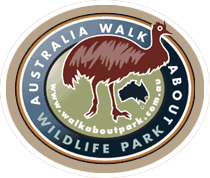Dingo
Dingo (plural dingoes) or warrigal, Canis lupus.
Dingoes
Dingo, is a type of wild dog, probably descended from the Southern-East Asian Wolf (Canis Lupus Pallipes).
It is commonly described as an Australian wild dog, but is not restricted to Australia, nor did it originate there. Modern dingoes are found throughout Southeast Asia, mostly in small pockets of remaining natural forest, and in mainland Australia, particularly in the north. They have features in common with both wolves and modern dogs, and are regarded as more or less unchanged descendants of an early ancestor of modern dogs. The name dingo comes from the language of the Eora Aboriginal people, who were the original inhabitants of the Sydney area.
Characteristics
The dingo is legendary as Australia’s wild dog, though it also occurs in Southeast Asia. The Australian animals may be descendants of Asian dingoes that were introduced to the continent some 2,000 to 3,000 years ago.
These golden-orange canids may live alone (especially young males) or in packs of up to 15 animals. They roam great distances and communicate with wolf-like howls.
Dingo hunting is opportunistic. Animals hunt alone or in packs. They pursue small game such as rabbits, rodents, birds, and lizards in addition to larger prey such as kangaroos, sheep and deer. These dogs will eat fruits and plants as well. They also scavenge from humans, particularly in their Asian range.
Dingoes breed only once a year. Females typically give birth to about five pups, which are not independent until six to eight months of age. In packs, a dominant breeding female will kill the offspring of other females.
Australia is home to so many of these animals that they are generally considered cute, but pests. A famous “dingo fence” has been erected to protect grazing lands for the continent’s herds of sheep. It is likely that more dingoes live in Australia today than when Europeans first arrived.
Though dingoes are numerous, their pure genetic strain is gradually being compromised. They can and do interbreed with domestic dogs to produce hybrid animals. Studies suggest that more than a third of southeastern Australia’s dingoes are hybrids.
At between 10 and 24 kilograms (22-53 pounds), dingoes are a little smaller than wolves of the northern hemisphere (in keeping with Bergmann’s Rule) and have a lean, athletic build. They stand between 44 and 63 cm (17-25inches) high at the shoulder, and the head-body length varies between 86 and 122 cm (34-48inches). Fur colour varies but is usually ginger: some have a reddish tinge, others are more sandy yellow, and some are even black; the underside is lighter. Alpine dingoes are found in high elevation areas of the Australian Alps, and grow a second thicker coat during late autumn for warmth which usually sheds by mid to late spring. Most dingoes have white markings on the chest, feet, and the tip of the tail; some have a blackish muzzle. They can live for up to 14 years in captivity, but have a more usual lifespan of 3-7 years.
Unlike the domestic dog, dingoes breed only once a year, generally do not bark, and have erect ears. They have a more independent temperament than domestic dogs, and the skull is distinctive, with a narrower muzzle, larger auditory bullae, larger canine teeth, and a domed head. They are extremely agile and are known to climb trees.
Wild dingoes prey on a variety of animals, mostly small or medium-sized animals, but also larger herbivores if need be. They are opportunistic carnivores, taking prey ranging in size from lizards and small rodents up to sheep and kangaroos.
Dingoes do not generally form packs; they more often travel in pairs or small family groups. However, they are capable of forming larger packs to hunt cooperatively. While dingo groups use defined home territories, these territories can overlap with those of other groups.
Domestication is possible only if the dingoes are taken into captivity as young pups.
Relationship with invasive species
In Australia, dingoes compete with the same food supply as introduced feral cats and foxes, and also prey upon them (as well as on feral pigs). A study at James Cook University has concluded that the reintroduction of dingoes would help control the populations of these pests, lessening the pressure on native biodiversity. The author of the study, Professor Chris Johnson, notes his first-hand observations of native rufous bettongs being able to thrive when dingoes are present. The rate of decline of ground-living mammals decreases from 50% or more, to just 10% or less, where dingoes are present to control fox and cat populations.
Potential extinction.
As a result of interbreeding with dogs introduced by European settlers, the purebred dingo gene pool is in decline. By the early 1990s, about a third of all wild dingoes in the south-east of the continent were dingo/domestic dog crosses, and although the process of interbreeding is less advanced in more remote areas, the extinction of the subspecies in the wild is considered inevitable.
Although protection within Federal National Parks, World Heritage areas, Aboriginal reserves, and the Australian Capital Territory is available for dingoes, they are at the same time classified as a pest in other areas. Since a lack of country-wide protection means they may be trapped or poisoned in many areas, in conjunction with the hybridisation with domestic dogs the taxon was upgraded from ‘Lower Risk/Least Concern’ to ‘Vulnerable’ by the IUCN (International Union for the Conservation of Nature and Natural Resources) in 2004.

